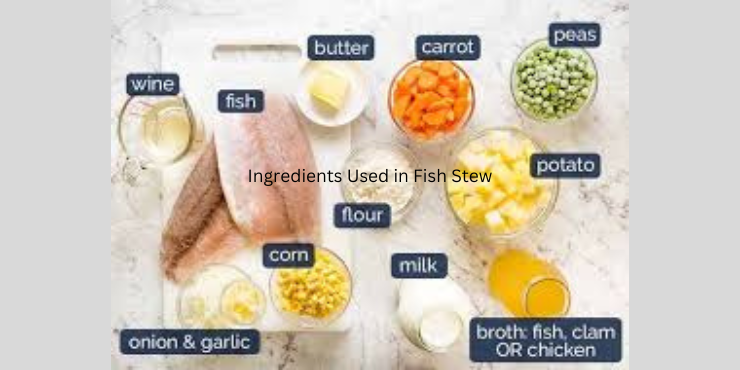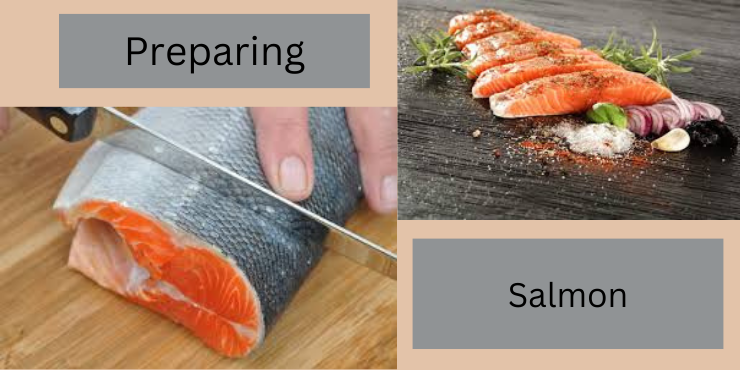Table of Contents
Salmon is not just a delicious fish; it’s also packed with essential nutrients and offers numerous health benefits. Whether you’re a seafood enthusiast or looking to incorporate more nutritious meals into your diet, learning how to prepare salmon can elevate your culinary skills. From selecting the perfect fillet to mastering various cooking techniques, this guide will take you through everything you need to know to create mouthwatering salmon dishes at home.
1. Introduction to Preparing Salmon
Salmon is a highly sought-after fish known for its rich flavor and versatility in cooking. From its vibrant pink flesh to its omega-3 fatty acids, salmon has earned its place as a staple in many cuisines worldwide. Not only does it taste delicious, but it also offers a myriad of health benefits, including improving heart health, and brain function, and reducing inflammation.
2. Selecting the Right Salmon

Before you begin preparing salmon, it’s essential to choose the right type and quality of fish. When selecting fresh salmon, look for fillets that are firm to the touch with a vibrant color and a fresh, ocean-like smell. If fresh salmon isn’t available, high-quality frozen salmon can be a great alternative, provided it’s properly thawed before cooking.
3. Preparation Techniques
Proper preparation is key to unlocking the full flavor of salmon. If using frozen salmon, it’s crucial to thaw it safely in the refrigerator overnight or under cold, running water. Once thawed, remove any scales and pin bones from the fillet using a sharp knife or fish tweezers. This step ensures a pleasant dining experience without any unwanted crunchy textures.
4. Cooking Methods

Salmon can be cooked using various methods, each offering its unique flavor profile and texture. Grilling salmon over an open flame imparts a smoky flavor while baking results in a tender and moist fillet. Pan-searing creates a crispy exterior, while broiling caramelizes the top of the fish for an irresistible finish.
5. Recipes for Preparing Salmon
Experimenting with different recipes is a fun way to discover new flavor combinations and cooking techniques. Try marinating salmon in a zesty lemon herb sauce before grilling for a burst of freshness, or coat it in a sweet and tangy maple mustard glaze before baking for a caramelized crust. For a decadent treat, pan-sear salmon in garlic butter until golden brown and fragrant.
6. Serving Suggestions
When serving salmon, consider pairing it with complementary side dishes and garnishes to enhance the overall dining experience. Fresh salads, roasted vegetables, or creamy mashed potatoes are excellent choices to accompany salmon. Garnish with fresh herbs, lemon wedges, or a drizzle of homemade sauce for added flavor and visual appeal.
7. Storage Tips
To prolong the freshness of salmon, it’s essential to store it properly. Raw salmon should be kept refrigerated and consumed within a few days of purchase. Alternatively, you can freeze salmon for future use by wrapping it tightly in plastic wrap and aluminum foil. Frozen salmon can be safely stored in the freezer for up to three months without compromising quality.
8. Safety Precautions
When handling raw salmon, it’s crucial to practice proper food safety measures to prevent foodborne illness. Always wash your hands thoroughly before and after handling raw fish, and avoid cross-contamination by using separate cutting boards and utensils for raw and cooked foods. Ensure that salmon is cooked to an internal temperature of 145°F to kill any harmful bacteria.
9. Common Mistakes to Avoid
Even experienced cooks can make mistakes when preparing salmon. One common error is overcooking the fish, which can result in a dry and tough texture. To avoid this, cook salmon just until it flakes easily with a fork. Additionally, using high heat with delicate fish like salmon can cause it to burn or become overly charred, so it’s best to cook it over medium heat for even cooking.
10. FAQs About Preparing Salmon
Is it necessary to remove the skin before cooking salmon?
Removing the skin is optional and depends on personal preference. While some enjoy the crispy texture of seared salmon skin, others prefer to remove it before cooking.
How long does it take to grill salmon?
The cooking time for grilled salmon varies depending on the thickness of the fillet and the heat of the grill. As a general rule, grill salmon for about 4-6 minutes per side, or until it reaches an internal temperature of 145°F.
Can I marinate salmon overnight?
Yes, you can marinate salmon overnight for maximum flavor penetration. However, be cautious not to marinate it for too long with acidic ingredients like lemon juice, as it can break down the delicate flesh and affect the texture.
What’s the best way to tell if salmon is cooked through?
The best way to tell if salmon is cooked through is by checking its internal temperature with a meat thermometer. Salmon is done when it reaches 145°F at the thickest part of the fillet and flakes easily with a fork.
Can I use frozen salmon for sushi?
While it’s possible to use frozen salmon for sushi, it’s essential to ensure that the fish has been properly thawed and handled to prevent foodborne illness. Additionally, only use sushi-grade salmon that has been specifically labeled for raw consumption.
Conclusion
In conclusion, preparing salmon is a rewarding culinary experience that offers both delicious flavors and health benefits. By following proper techniques and experimenting with different recipes, you can create memorable meals that will delight your taste buds and nourish your body. Whether you’re grilling, baking, or pan-searing, salmon is a versatile ingredient that lends itself to countless culinary

